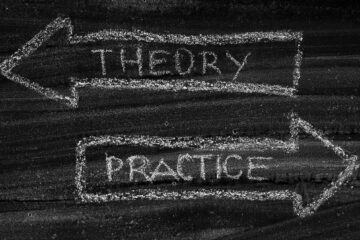In their plans to implement the federal Every Student Succeeds Act (ESSA), states have taken the opportunity to revamp their accountability systems, moving away from the narrow focus on reading and mathematics test scores used in the No Child Left Behind era. States have proposed adding additional measures of school quality, such as school climate and attendance rates; moved away from a single school rating by providing a “dashboard” of indicators of school quality; and created different remedies for schools depending on their performance; among other changes.
One option states have not taken is a different type of accountability system, one that is common in top-performing countries: inspection systems. Inspection systems, also known as school quality reviews, involve intense examinations of teaching and learning and school practices by experienced educators in order to provide comprehensive reports on strengths and weaknesses and recommend steps that the schools can take to improve instruction and student outcomes. The reviewers typically examine documents, such as test scores and lesson plans; visit classrooms; and interview teachers, school leaders, and students.
Inspection systems are not new; the Netherlands created a school inspectorate in 1801 and the British government established one in 1839 when Queen Victoria named two inspectors to examine schools as a condition of receiving funds from the government. The idea has spread throughout the British Commonwealth and across Europe. The Standing International Conference on Inspectorates, an organization formed in 1995 to provide support for the inspectorates in Europe, now includes 36 nations and regions. Some U.S. states, such as Vermont and Massachusetts, as well as some districts, including New York City and Cleveland, have implemented school quality reviews based on the idea of inspections to augment their accountability systems.
A recent report from Jobs for the Future outlined potential advantages of the approach, as well as some of the challenges in implementing it. The report notes that inspection systems can take an expansive look at teaching and learning, not just test scores; they are designed to foster improvement, not just identify failure; and they can engage educators in understanding what high-quality instruction looks like by employing teachers and school leaders as inspectors.
However, the report notes, inspection systems can be costly, they pose challenges for ensuring that judgments about schools are reliable and valid, and they place a burden on schools, by requiring them to provide extensive documentation on their practices.
The experience in high-performing nations shows that these challenges can be met and that inspection systems can contribute to school improvement. The systems vary:

In Hong Kong, all schools develop an improvement plan based on Hong Kong’s School Development and Accountability framework. To complement the self-assessment process, the Education Bureau (EDB) carries out External School Reviews (ESRs). Schools are generally chosen at random for ESRs and notified approximately three months in advance. The ESR teams consist of three to four EDB officers and a practicing educator. Immediately following the review, the ESR team provides an oral briefing to the school leader and a team of teachers. The ESR team then submits a written report. The school is then required to submit a written response to the report within four weeks that outlines how it will carry out the recommendations. The final report, which includes the school’s response, is required to be made available to parents and other members of the school community.
In addition to ESRs, EDB conducts Focus Inspections, which focus on specific topics that EDB is interested in learning more about to inform its policies such as teaching and learning in specific subject areas. The EDB has established Regional Education Offices to help schools implement improvement strategies in response to feedback from the External School Review process.

In the Netherlands, the Education Inspectorate assesses all schools receiving public funds—both independent and public—on a regular schedule. Inspections are designed to make sure that the schools’ funds are being spent appropriately, the curriculum is in place for the required subjects, and the attainment targets are being met. Inspectorate staff members—mostly former educators—inspect all schools once every four years, but the Inspectorate intensifies inspections of the small percent of schools deemed to be low-performing. The Inspectorate reports are public, and in addition to school reports they publish a national report each year summarizing their findings on schools across the country.
Low-performing schools (about 3 percent to 4 percent of schools) are required to develop improvement plans, and more intensive inspections if they do not improve. Continual low performance can result in financial penalties; the Inspectorate can withdraw funding from schools that do not improve. The Ministry also created incentives for high-performing schools by establishing an Excellent School designation. The number of schools applying for this designation has increased, as has the number of schools earning it.

Schools in New Zealand are held accountable through an inspection system run by the Education Review Office (ERO), an agency of the Ministry of Education. The ERO reviews include an examination of data collected by the Ministry, schools’ self-assessments, and an on-site review, conducted by former educators who are trained as evaluators, that includes meetings with the board of trustees, leadership, teachers, and students. (Each school in New Zealand has a board.) The ERO then produces a report that rates each school against standards for student achievement, student well-being, school governance, leadership, and teacher quality. Based on the review, the ERO places each school in three categories according to how often they will be reviewed: high-performing schools are reviewed every four to five years, well-performing schools are reviewed every three years, and poor-performing schools are reviewed on an ongoing basis for the following one to two years. Schools are generally responsible for carrying out the recommendations in an ERO report, but when the ERO has serious concerns about a school, it can provide additional support for improvement.

In South Korea, schools are evaluated annually by inspectors overseen by the metropolitan/provincial education offices. They complete school inspections based on a Ministry of Education evaluation plan, which sets directions and standards. Although local governments can select inspectors, most, rely on experienced teachers and school leaders. School evaluations review teaching and learning practices, curriculum, and student needs. The Ministry of Education has recently added school-based performance awards in which top-performing schools receive bonuses. School reviews are not used punitively; rather, struggling schools are given advice and guidance about how to improve. Low-performing schools are monitored regularly to see if the improvement plans result in higher levels of student learning. The results of school evaluations are reported publicly.

In Taiwan, the Ministry of Education inspects upper secondary schools and intervenes with those determined to be low-performing. The low-performing designation is based on a Ministry evaluation of school management and school leadership practices. An on-site counseling group made up of university professors and experienced principals coaches the leaders of low-performing schools for one year. A follow-up evaluation is conducted the following year to make sure performance has improved. Local governments oversee elementary and junior secondary schools. Schools that are rated as “in observation” in any aspect of the evaluations must make plans to improve themselves with the assistance of school inspectors from the local Bureau of Education. If a school does not improve, there are additional follow-up inspections focused on those areas of weakness.
The experience of these and other countries suggest that the inspection systems are most effective in improving teaching and learning when they: begin with a way for schools to examine their own practices; measure a broad range of school practices and student outcomes; rely on excellent educators as inspectors who are trained carefully to provide accurate judgments; and provide detailed reports that point the way for schools to improve.
Of course, inspection systems by themselves do not improve schools; schools need the capacity to implement the recommendations and strengthen instruction and school operations. And countries are increasingly moving to build school capacity by requiring schools to conduct self-evaluations and convening teams to develop improvement plans. But the inspection systems show that accountability can contribute to improvements in school performance, not just measure it.





